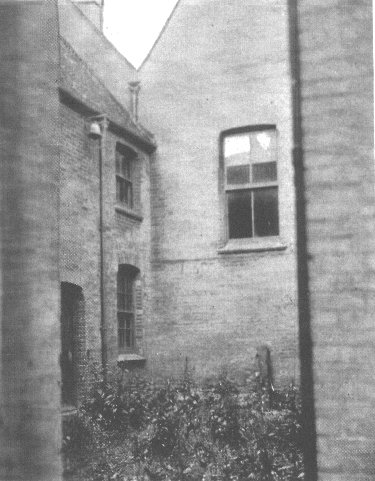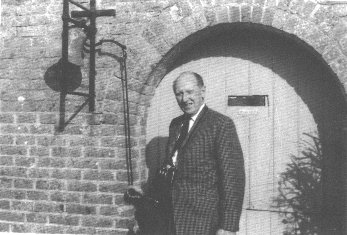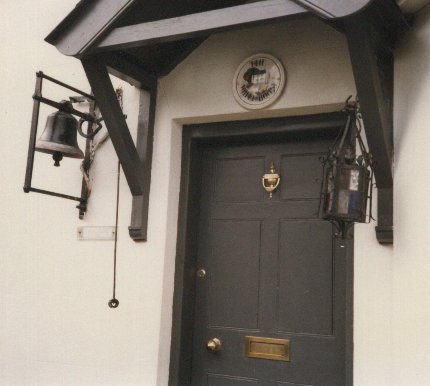 In 1863 the rector of Borley, the Rev. Henry Bull, built (on the foundations of aprevious structure) Borley Rectory, a building that was to become world famous as "the most haunted house in England."
In 1863 the rector of Borley, the Rev. Henry Bull, built (on the foundations of aprevious structure) Borley Rectory, a building that was to become world famous as "the most haunted house in England." In 1863 the rector of Borley, the Rev. Henry Bull, built (on the foundations of aprevious structure) Borley Rectory, a building that was to become world famous as "the most haunted house in England."
In 1863 the rector of Borley, the Rev. Henry Bull, built (on the foundations of aprevious structure) Borley Rectory, a building that was to become world famous as "the most haunted house in England."
Borley is a small village on the Essex-Suffolk border, not far from Long Melford, and in the courtyard of the rambling rectory on the hill facing the church, Mr. Bull hung a great iron bell, high up near a second-floor window where it could be heard through the twenty-odd rooms of the house.
On the death of Henry Bull in 1892, he was succeeded by his son, the Rev. "Harry" Bull, who was rector until his death (in the Blue Room where his father had died before him) in 1927. From 1928 until 1930, the Rev. Guy Eric Smith held the living: 18 months in the rectory was enough for his wife and him. In 1930 a cousin of the Bull family who held the living offered it to their cousin, the Rev. Lionel Foyster. He and his wife lived at Borley until 1935.
Thereafter it was never lived in again. The ecclesiastical authorities decided that it was "unsitable" as a residence on account of the strange happenings and the reputation the house had acquired. In 1939 the place caught fire and was soon gutted. Nothing now remains above the level of the ground to mark the site of the haunted rectory.
During the occupation of the four successive rectors and their families, a truly remarkable array of apparently paranormal happenings took place, and everyone who lived there during those 75 years asserted that they heard sounds, saw apparitions, witnessed the movement of objects, felt "touchings," received "messages," and had other impressions that they were totally unable to explain by normal means. Bell-ringing was a common manifestation, and time without number the great bell was reported to ring when no-one was anywhere near it. I have talked with a nearby inhabitant of nearby Cavendish who occasionally spent a night at the rectory, and he told me that on one occasion, when he and the rector were alone in the house, he was awakened by a tremendous pealing of the bell: the rector, in his nightshirt, hurried into the room to comfort the boy in case he was frightened. The two of them listened to the loud pealing for some minutes. No explanation was ever found. Ethel Bull, one of Harry's sisters, told me that she had been awakened times without number by the bell "tolling by itself."
 In 1938, when the rectory was about to pass out of the hands of the church authorities, Mr. Harry Price, a well-known investigator of psychic happenings who produced two books entirely devoted to the haunting, asked whether he could have the bell. He had it removed and fixed over the workshop at his home, Arum Bank, in Pulborough.
In 1938, when the rectory was about to pass out of the hands of the church authorities, Mr. Harry Price, a well-known investigator of psychic happenings who produced two books entirely devoted to the haunting, asked whether he could have the bell. He had it removed and fixed over the workshop at his home, Arum Bank, in Pulborough.
After Harry Price died in 1948, his ageing widow told me that she had occasionally used the bell to call neighbors in time of need, and that once or twice it had rung when no one had touched it.
About ten years ago I wrote to the executors of the Price estate and asked whether I might be given the opportunity of buying the bell when the estate wound up. In August 1973, the executors wrote to say that Mrs. Harry Price was getting too old to look after herself and was going into a Home. The effects were the property of the University of London, to which Harry Price had also left his unique library of some 15,000 volumes devoted to magic and psychical research. At the same time I was informed that I had been granted ownership of the "Great Bell of Borley." So the Borley Bell came to [my home]. I collected it from Pulborough and erected it on the front of the [house], where I am still waiting for it to ring by paranormal means!

c. 25 Jan. 2011, Vincent O'Neil